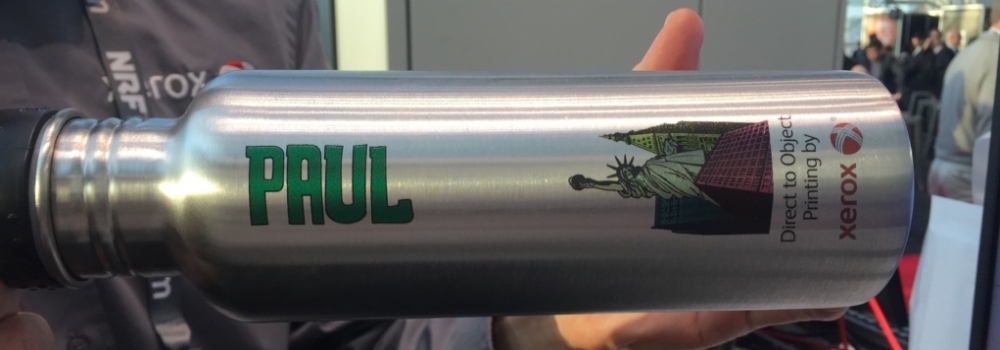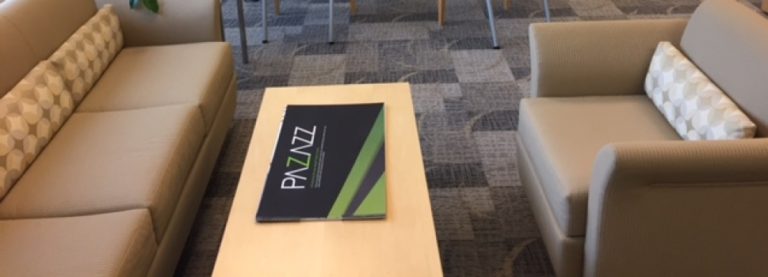By Gregory Pings, manager of Content Marketing
In startup mode, every day is different; a new set of requests; new things to be done; juggle multiple new projects.
“Twenty years ago, I worked on a couple of things,” Minette Beabes explained. “I knew who was on the team, and the deliverables did not change from day to day.”
Timelines to deliver new products were set in years. That was then. This is now.
“In New Starts, I work with many customers so that I can understand and solve each of their problems. Now, I think of projects and deliverables in terms of months. A few months.”
Beabes is a program manager for Engineering Services — New Starts at Xerox, where she focuses on commercializing new printing technology that uses Xerox ultra violet (UV)-cured inks, among other technologies. If you’ve seen the Xerox Direct to Object Inkjet Printer, then you’ve seen the some of the technology from Engineering Services. This is just the beginning.
It's time to go beyond the flat land…. #XRIJF #sponsor pic.twitter.com/v7feK9Cciz
— Xerox (@Xerox) July 21, 2017
Minette Beabes shows how the Xerox Direct to Object printer can fulfill personalized orders for merchandise immediately — while the customer watches.
When a page is no longer paper
When you see “set the page free” in a Xerox advertisement, we hope you get the message that “the page” is something more than a piece of paper. Case in point, our Engineering Services group brings print beyond paper.
“Way beyond paper,” Beabes pointed out. “We use inkjet technology on actual objects – like bottles, glasses, or sports equipment. We can print on a wide variety of substrates that now include metal, glass, ceramics, plastics and plastic films.”
Sometimes the printed messaged is as simple as personalizing your golf balls or a notebook – but go further beyond that:
https://youtu.be/I6_SUdjet8w
Minette and Brendan Casey showcase the Xerox Production Press for Plastic Films & Substrates Printing. They point out that this technology prints directly onto a variety of plastic materials such as PET, polypropylene, and HDPE. Applications include plastic clamshells on consumer products, personalized gift cards and credit cards, and more.
The technology of new technology
“I am most productive at work,” Beabes said. “My work space is stacked with boxes of stuff coming in and going out.”
When your job revolves around objects and determining how print on those objects adds value, your world becomes very tactile.
“I must see these samples and feel them. I have to determine if the quality of the print is good, then send it back to the customer so that our sales teams can continue the engagement.”
The technology required for this job goes beyond computers and email. Each physical object in Beabes’ office (and two filing cabinets, and a cage in the manufacturing area) is accompanied by a stream of electronic files.
“The files come in all kinds of formats,” she pointed out. “Images and photos created in programs like InDesign, Illustrator or Photoshop present their own challenges.” That said, her go-to technologies are PDF formats and her desktop Snipping Tool. The machines she works with all accept PDF, and the Snipping Tool is really handy for keeping file sizes of screen snapshots under control for sending through email.
The Modern Workplace series is published each Friday on Xerox Connect. Subscribe to this blog so you won’t miss a thing, or retrieve your favorite Modern Workplace articles here.
The stream of files taxes her inbox which has predefined limits on how much it will hold. Go over the limit, and you won’t receive any more email unless you clean out your inbox. File transfer sites like DropBox and WeTransfer keep Beabes out of mail jail. But, she pointed out, a program that links email, file repositories, customers, sales reps and physical samples would be a great way to organize everything.
Technology makes it easy to work with people around the world. “But I need to work with people,” Beabes said. “Video conferencing can work well for groups. On a daily basis, though, I’m not entirely comfortable with video conferencing, because it makes me think about how I appear to people on the other side of the camera. It’s easy to be looking down at your screen and not appear to be looking at the people you’re meeting with. This can be distracting to the dialogue.”
“Face-to-face communication helps me feel more connected,” she concluded. “I like the contact with people.”




very nice